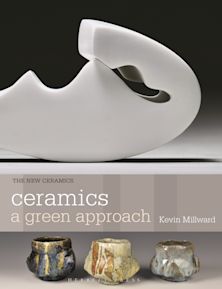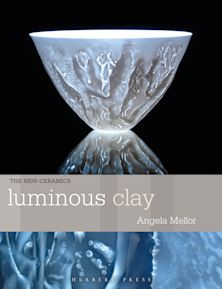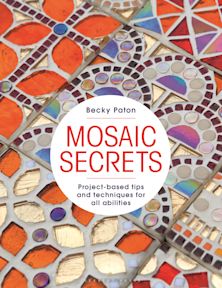- Home
- NON-FICTION
- Arts, Crafts & Fashion
- Ceramics
- Slab Techniques
Slab Techniques
Please note that this product is not available for purchase from Bloomsbury websites.
You must sign in to add this item to your wishlist. Please sign in or create an account
Description
Although this is essentially a very simple subject, slabs can be used to
make the most basic of forms to the most complex. This broad approach
to slab work shows a wide variety of building methods and shows the
work of many high-profile ceramic artists in this area. The book
explores and explains most of these methods through step-by-step images
and text, using a varied range of both pots and sculpture. There are
often several techniques that could be used to achieve the same result and this book shows that no one method is
correct, but there will be one which is appropriate for the potter, the
clay and the firing process. The reader is encouraged to experiment and develop their own ideas.
The book covers all the basics, such as making your slabs and
joining well, simple building methods, use of supports, creating
textures, decorating with slips and ways to avoid disasters during
firing. It also looks at many innovative and original approaches, as
well as building
large-scale pieces and the problems associated with it. The book aims
to encourage the reader to experiment and find
the methods most suited to them, while fantastic images of finished
work are
offered to show what is possible.
Table of Contents
Foreword
1. Getting Started
Clay (Choice, plasticity, colour, texture, grogged, fibres) not to
mention preparation, moisture content, temperature, glaze etc.
include handbuilding with porcelain
2. Making the Slab
Clay preparation, Rolling by hand, Slab rollers, Cutting from the block.
Alternatives: throwing on the wheel, pounding out, extrusion based starting point, slip cast slabs, using flattened coils.
3. Construction techniques
Looking after the slab (control of moisture content). Methods of handling slabs and turning sheets of clay.
Joining methods: (Scoring, water vs. slips, secure stitching, adding
coil reinforcements). Angle cutting. Use of multiple examples,
not just one method.
Simple building approach: (flat slabs, tiles, wrap around tubes, slabs from coils.)
4. Using Moulds and Supports
Supports during construction: (building formers, internal
considerations, hump moulds, slump moulds. Drop in frames and dish
shapes. Detailed moulds (repeats, birds animals etc.)
Speed merchant: Use of heat, torch, flame and even kilns to rapid dry elements or all of the work.
5. Colour and Texture: Clay, slips and glazes.
Mixed colours into clays. Clay combinations, Slip options (Brush, spray, dip, stencil, resist). Printing metods
Creating Textures in soft clay. Tools, stamps, rollers, found objects,
surface modelling, using a found surface, textiles, prepare
Smooth to Rough: Surface control, cut vs. modelling edges,
Scraping and burnishing. Protecting slip and surface patterns while
working.
6. Finishing Off
Details: Rims, feet, profiles and edges. Use of extrusions.
Changing the surface: Stretching, drying and re-rolling, applications of powdered clay.
7. Going Larger
Clay preparation. Supports for making.
Multiples, Sectional works.
Wall murals, Sculptures, Stacking pieces.
Special problems: Construction, drying, sections that fit, permanence, mounting and security.
8. Glazing
Glazes and Oxides: Application methods - brush, spray, pouring, dipping, stencils, wax resist.
9. Drying and Firing
Shrinkage, Storage, even drying control. Warping, cracking, re-wetting
clay. Repairs to leatherhard and dry pieces. Use of paper clay
for repairs.
Supports to aid drying and firing. Coils, slabs, bat wash.
Kiln awareness: Moisture release, warming and bisque firing. Glaze firing. Possibilities of 'Once Firing'.
Suggested Reading
Glossary:
Index:
Product details
| Published | 15 Nov 2010 |
|---|---|
| Format | Paperback |
| Edition | 1st |
| Extent | 112 |
| ISBN | 9781408110072 |
| Imprint | Herbert Press |
| Illustrations | Approx. 110/120 |
| Dimensions | 234 x 156 mm |
| Series | Ceramics Handbooks |
| Publisher | Bloomsbury Publishing |



































